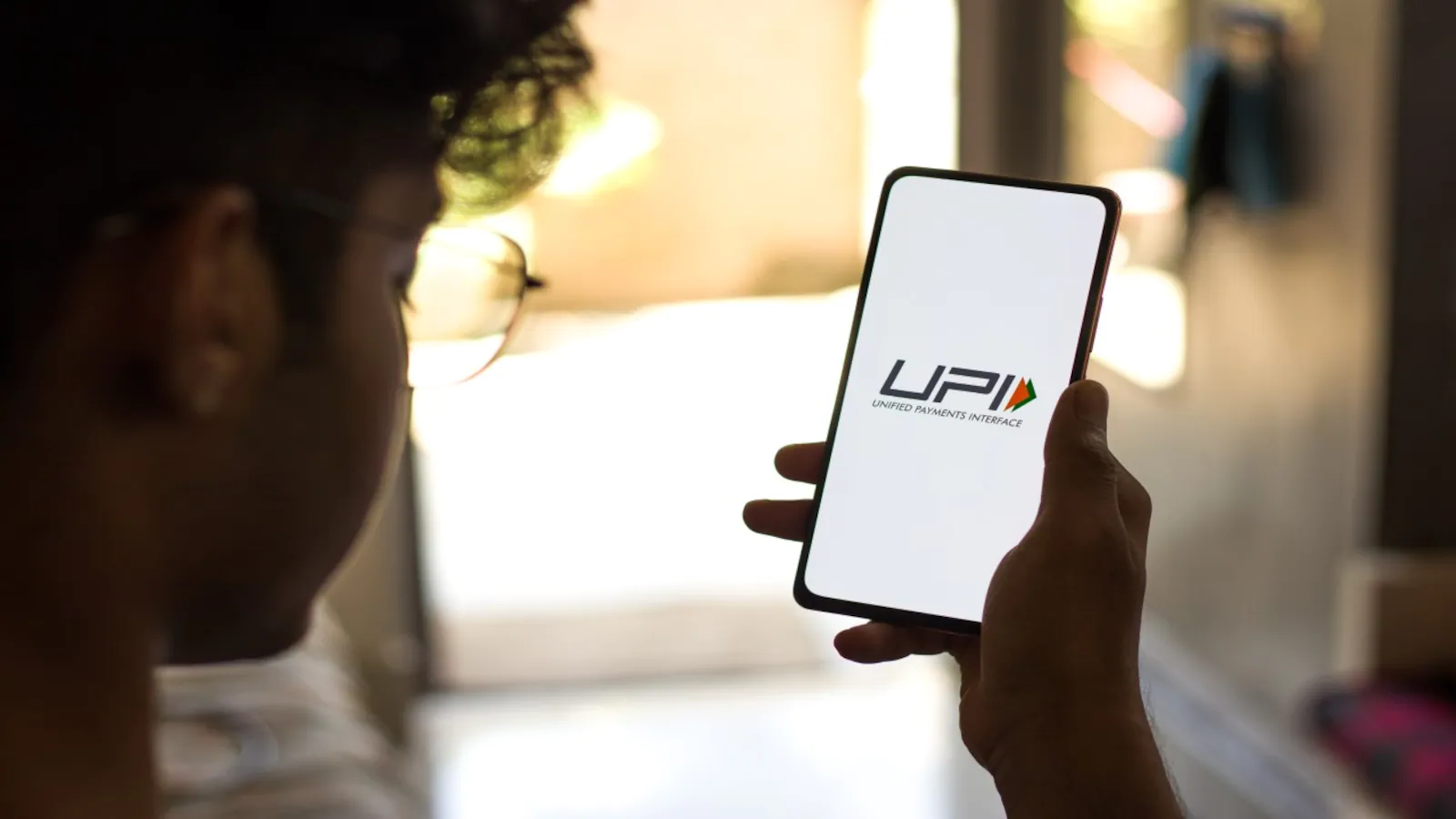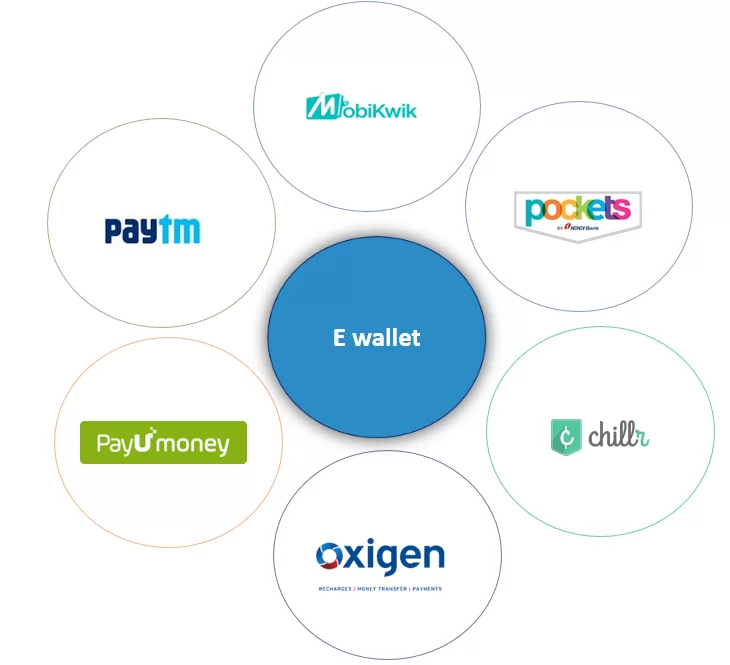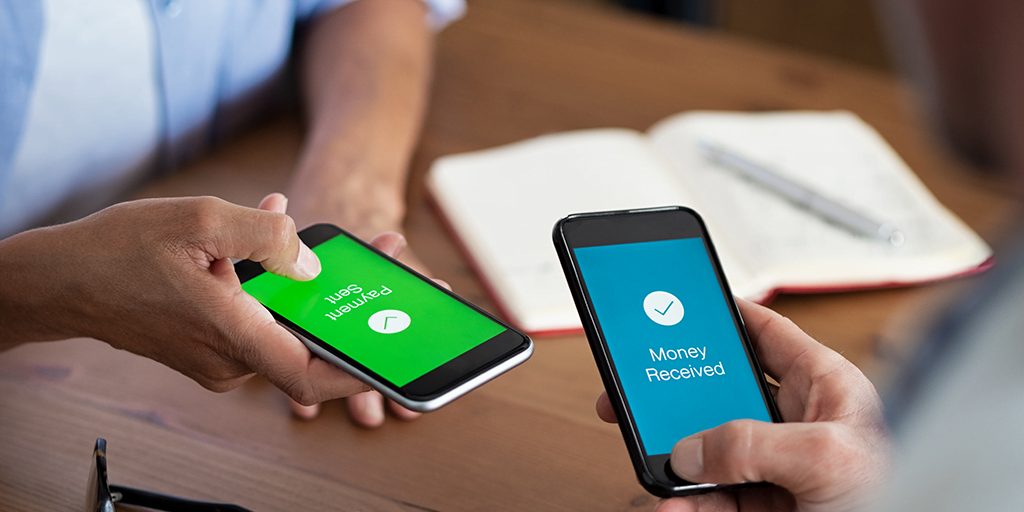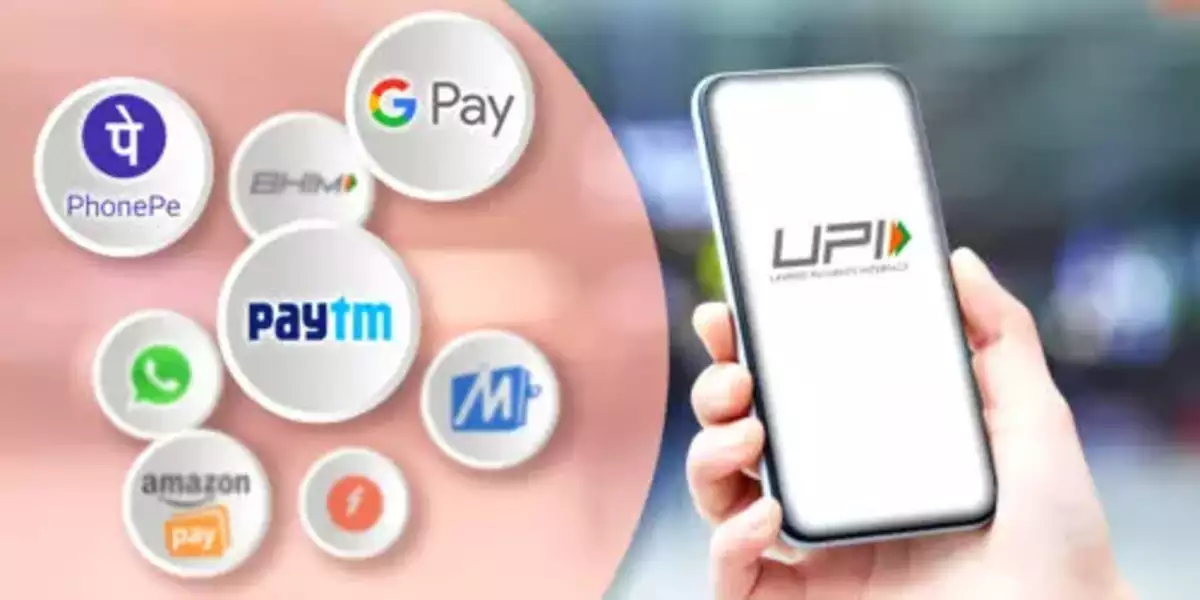UPI transactions reaches new heights with 5.58 billion in April 2022

UPI transactions reaches new heights with 5.58 billion in April 2022
According to information provided by the National Payments Corporation of India (NPCI), 5.58 billion transactions were processed using the Unified Payments Interface (UPI) in April 2022. This is the most extensive number of UPI transactions in a single month since the system was launched in 2016.
Last month, the payments network saw transactions worth Rs. 9.83 lakh crore.
In March 2022, it recorded 5.4 billion transactions valued at 9.6 lakh crore, indicating that the volume of transactions increased 3.28 per cent while the value of transactions decreased 2.36 per cent.
UPI is currently one of the most popular digital payment options in the country. After all, the system was created to allow payments to be made in a matter of seconds.
According to information provided by the National Payments Corporation of India (NPCI), 5.58 billion transactions were processed using the UPI in April 2022. This is the biggest number of UPI transactions in a single month since the system was launched in 2016.
UPI is currently one of the most popular digital payment options in the country. After all, the system was created to allow payments to be made in a matter of seconds. Last fiscal year, WhatsApp processed 17 million transactions.
The app-based statistics for April are scheduled to be released in the second week of May, according to NPCI.
With the launch of UPI123Pay in March 2022, the Reserve Bank of India (RBI) has permitted the payment mechanism for feature phone users and offline mode to spread UPI adoption further.

About UPI
The National Payments Corporation of India (NPCI) created the Unified Payments Interface, a real-time payment system that enables for inter-bank peer-to-peer (P2P) and person-to-merchant (P2M) transactions. By instantly transmitting payments between two bank accounts on a mobile platform, the Reserve Bank of India (RBI) regulates the interface.
There are 304 banks on UPI as of 2022, with a monthly volume of 4.52 billion transactions and a value of 8.26 lakh crore. Up till November 2021, UPI had 68 billion transactions. During the 67 months since its launch in 2016, the mobile-only payment system has helped transact a total of 34.95 lakh crore.
As of May 2021, the site had 15 crore monthly active users in India. The share of UPI transactions in total digital transactions climbed from 23 per cent in 2018–19 to 55 per cent in 2020–21, with an average value of $1,849 per transaction. The platform processed digital transactions of Rs. 8.31 lakh crore in January 2022. In FY 2022, the UPI processed $1 trillion in transactions.
History
The National Payment Corporation of India was founded in April 2009 to integrate all payment mechanisms in the country and make them consistent for retail payments. By March 2011, the RBI discovered that each Indian resident only engages in six non-cash transactions per year, even though 10 million (10 million) retailers accept card payments. Approximately 145 million families do not have access to any type of banking. There is also the problem of combating black money and corruption, which occurs primarily in cash.
In 2012, the RBI released a four-year vision statement expressing its commitment to establishing a safe, efficient, accessible, inclusive, and authorized payment and settlement system in India. It’s part of the Green Initiative, which attempts to cut down on the use of paper in household payments. In 2016, UPI became available to the general public.
NPCI was given the duty of developing a new payment system that is easy, secure, and interoperable under RBI oversight. UPI is based on a four-pillar interoperable push-pull model that includes a remitter/beneficiary front end payment service provider and a remitter/beneficiary back end bank that settles users’ monetary transactions. UPI has become one of India’s most successful deep-tech ideas.
Google proposed the construction of FedNow, a real-time payment system for the United States, to the US Federal Reserve Board in December 2019, citing the success of UPI.
According to estimates from ACI Worldwide and GlobalData, India will overtake China and the United States as the world’s largest real-time payment market in 2020, with 25.50 billion annual transactions.
In 2021, NPCI teamed with fintech startup Ubona Technologies on the Interactive Voice Response project to develop a voice-based payment service for feature phone customers in low-connection zones using the UPI payment ecosystem. The system will combine Dual-Tone Multi-Frequency signalling technology with a two-factor authentication flow for peer-to-peer transactions. It will be in beta testing from September 2020 to June 2021, with the full implementation seeking RBI approval. The beta testing and pilot trial were finished by October 2021, and RBI began preparing suggestions for implementation across the country.
UPI has positioned India as the global leader in real-time payment, followed by China and South Korea, according to the Economist Intelligence Unit Report 2021. The number of low-value transactions surged after the Ministry of Finance decided to abolish the merchant discount rate (MDR) on UPI in 2019, resulting in huge improvements in real-time transaction volume statistics. Many countries strive to duplicate UPI’s success in their markets, like Brazil, Bahrain, Saudi Arabia, the United States, and the European Union.
UPI has become a popular payment mechanism for initial public offerings since January 1, 2019. In March 2020, the transaction limit was raised from $100,000 to $200,000. The RBI upped the cap for Retail Direct Scheme and IPO applications to 500,000 from December 2021. RBI is mulling a merchant discount rate (MDR) on future UPI transactions to make it commercially viable for payment providers. The RBI recommended cardless cash withdrawal from ATMs using UPI-based QR codes in its maiden monetary policy for the fiscal year 2022-23.
UPI 2.0
On August 16, 2018, UPI 2.0 was released, allowing users to link their Overdraft accounts to a UPI handle. Users could also give a specific merchant a mandate to pre-authorize transactions. The option to see and store transaction invoices was added in version 2.0. You can also set up AutoPay to make recurring payments. As of August 2021, SBI, Bank of Baroda (BOB), and Paytm Payment Bank registered 660,000, 204,000, and 186,000 UPI AutoPay mandates.
UPI 123PAY
The RBI has developed 123PAY, a new UPI service targeting India’s almost 400 million feature phone customers. The new function was announced by RBI Governor Shaktikanta Das. Previously, UPI payments were only available through smartphone apps and a USSD-based service for feature phones. However, deputy governor T Rabi Shankar claims that the latter has proven inconvenient due to a lack of coverage on multiple cellular networks.
The system will combine Dual-Tone Multi-Frequency signalling technology with a two-factor authentication procedure, similar to the normal UPI app, for peer-to-peer transactions. Still, it will work with an account number/phone number instead of a QR code, which is included in the normal payment system in feature phones.
Internationalization
NPCI International Payments Limited (NIPL) and UK-based PPRO Financial inked a Memorandum of Understanding (MoU) on November 17, 2021, to promote the use of UPI in worldwide markets, particularly in China and the United States, where India accounts for almost half of all international transactions. On January 26, 2022, Transact365, a UK-based fintech startup, enabled UPI for global merchants with real-time currency conversion, allowing them to conduct business in India without physically being there. According to an NPCI and RBI mandate, banks, payment service providers (PSPs), and third-party application providers (TPAPs) in India must enable worldwide acceptance through UPI by September 30, 2022.
Remittance
NIPL and Western Union will integrate UPI to simplify Indians living abroad to receive and send money due to a rise in remittances to India. The service will begin running in the second quarter of 2022. IndusInd Bank and DeeMoney, a Thai financial service provider, will employ UPI ID to validate Indian users for cross-border transactions.
The NPCI’s Money Transfer Operator partners programme includes this. IndusInd Bank intends to work with other overseas organizations to boost UPI’s international appeal. On January 27, 2022, NIPL signed an MoU with Terra Payment Services of the Netherlands, which will enable UPI customers to receive international payments in real-time from all around the world.
Service
The Unified Payments Interface is a real-time payment system that allows money to be transferred between bank accounts. Any UPI client app can be used, and one app can connect to multiple bank accounts. A user-created Virtual Payment Address or UPI ID can be used to pay or request money from a bank account via a KYC-linked mobile phone. For each user account, UPI generates a unique QR code for contactless payment.
Mobile apps
Any UPI app can make payments and financial transfers to and from UPI-enabled banks. NPCI manages its software, BHIM, in addition to third-party apps like Google Pay, PhonePe, Paytm, MobiKwik, Amazon Pay, WhatsApp Pay, and NPCI’s own app, Amazon Pay.
There are 304 banks connected to the UPI network as of February 2022, up from 214 on April 21, 2016.
In June 2021, the NPCI lifted the ban on WhatsApp onboarding UPI customers, which had previously been limited to 20 million (20 million) users. WhatsApp can now publicly deploy UPI to all its clients in India, with 530 million registered users.

On-Device wallet
Due to the fact that 50% of UPI transactions are less than $200 and occur more often, there is a significant volume backlog, which increases the failure rate and jeopardizes the payment network’s stability. As per the RBI guideline, UPI mobile apps must include on-device wallet functionalities starting in December 2021 to conserve electricity and computational power for banks. By utilizing the infrastructure of the mobile app developer, the in-built wallet will aid in low-value prompt payment, reducing the pressure on banks through the decentralization of back-end infrastructure and resources.
Supported banks
The National Payments Corporation of India (NPCI) keeps track of which banks accept UPI. Issuers are banks, while Payment Service Providers (PSPs) are listed with their UPI application and handle. PSPs are banks with their mobile application for transactional convenience. Issuers, on the other hand, are banks that do not have their own payment interface and instead rely on third-party software to complete UPI transactions.
e-RUPI
In conjunction with the Department of Financial Services, the Ministry of Health and Family Welfare, and the National Health Authority, e-RUPI or eUPI (a portmanteau of electronic Rupee and UPI) was established. On August 2, 2021, it entered into effect. The purpose of e-RUPI is to ensure that welfare benefits are delivered securely while also decreasing corruption by eliminating the middleman.
The service can be used by the private sector for its own corporate social responsibility programme. A QR code or SMS string is used to provide an e-RUPI, which is a sort of e-voucher delivered through a mobile phone. Because it will assist detect flaws in the national digital payment system, e-RUPI will act as a predecessor of the RBI’s future Central Bank Digital Currency (CBDC).
Financial Software and Systems (FSS) integrated e-RUPI for financially underserved sectors of society on December 1, 2021. Karnataka’s government has teamed up with NPCI to award student scholarships via e-RUPI, which can be accessed via feature phones as well.
Market share
From 93,000 transactions for $30 million in August 2016, UPI generated 800 million (800 million) transactions worth $1330 billion in March 2019. UPI had 1940,000 (1.94 million) initial public offering (IPO) mandates in June 2021, which climbed to 7660,000 (7.66 million) in July. This is the highest level since the Securities and Exchange Board of India (SEBI) made UPI mandatory for domestic retail investors in the IPO process.
By late August 2020, UPI had eclipsed American Express (AmEx) in India, with 18 billion (18 billion) annual transactions. UPI is expected to overtake Visa and Mastercard by 2023, according to NITI Aayog. UPI required three years to reach 1.14 billion (1.14 billion) transactions in October 2019 and 2.07 billion (2.07 billion) transactions by the end of October 2020. In 2020, the UPI platform will have transferred $457 billion in value, accounting for 15% of India’s GDP (GDP).
As of July 2021, UPI had recorded 43.25 crore (432.5 million) transactions of 56,734.5 crore, with the highest average daily transaction of around ten crore (100 million), which is more than double the amount from July 2020. UPI will account for 10% of all retail payments in India till August 2021. In August, PhonePe and Google Pay each had a market share of 45.94 per cent and 34.45 per cent in the UPI payment ecosystem, respectively, while Paytm had a market share of 11.94 per cent with 387.85 million transactions.
Domestic retail payments by value on UPI grew at an 18 per cent compound annual growth rate (CAGR) from 2015 to 21, whereas collective payments on all forms of UPI expanded at a 400 per cent CAGR between 2017 and 2021. In 2021, the UPI platform exchanged 41 trillion (short scale) worth of money, which is 2.8 times the value of debit and credit card payments at POS terminals and 20 times the value of digital wallets and prepaid instruments in India.
In August 2021, UPI recorded 355 crore (3.55 billion) transactions, up 9.56 per cent over the previous month. In August alone, money worth Rs.6.39 lakh crore was exchanged. Between September 2020 and July 2021, the rise in value terms doubled, from 3.2 lakh crore to 6 lakh crore. Since its debut in September, it has reached an all-time high of 3.65 billion transactions totalling Rs.6.54 lakh crore. The total transaction for 2021 has already surpassed 50 lakh crore.
In October 2021, UPI reached a value of 7.71 lakh crore, up 56 per cent from September. According to NPCI, daily UPI payments range from 25,000 crore to 30,000 crore in October. Person-to-Person (P2P) transactions accounted for 54% of all UPI transactions in October, while Person-to-Merchant (P2M) transactions accounted for 46%. Until November 2021, UPI had a worth of $844 billion. The overall transaction value on UPI hit Rs. 8.27 lakh crore in December, representing a 99 per cent annual growth rate. UPI accounts for most of India’s $2 trillion in annual digital payments.

10 Benefits of UPI
1. Free Fund Transfer
There were times when you had to pay 5% of the whole amount to transfer funds. Visa and Mastercard still charge payment to the merchant a fee of 1-2 per cent. Although NEFT and IMPS are not expensive, they will sting if the transaction is modest.
However, the UPI is the least expensive. Banks have made it free since the costs are so low. The majority of banks and payment apps do not charge a fee.
However, you should be aware that this payment option has a cost. Banks, NPCI, and mobile app firms, on the other hand, are footing the bill only to promote UPI fund transfers. There may be some costs in the future. Nonetheless, the UPI Fund transfer fee is assured to be the cheapest.
2. Beneficial Small Business Transactions
Before the UPI, you may not have paid $10 or $20 by debit or credit card. Card transactions are expensive. Therefore small business owners avoid them. However, UPI has altered the situation. Every retailer and street vendor is now prepared to accept UPI payments.
The low-cost and straightforward transaction makes it possible for both small business owners and consumers. You’ll require fewer trips to the ATM once you start using the UPI. The UPI has simplified merchant transactions.
3. Privacy of Bank Account
You’d agree that the risk of fraud accompanies the convenience of an online transaction. That is why we are hesitant to give anyone our account and credit card information. The UPI has handled this issue. It had discovered a method of transferring funds without disclosing the bank account number or credit card information. To receive money using IMPS and NEFT, you must share bank account information.
The UPI ID or VPA is used instead of the bank account number or card number in the UPI System. However, you do not need to provide your account number to receive funds in this approach.
Many mobile apps use contact information to determine the UPI ID. As a result, you don’t even need to know the beneficiary’s UPI ID or VPA.
4. Increased Safety
Not everyone pays with a credit card. Everyone does not use Netbanking for online payments. Because of security concerns, people are hesitant to embrace cashless techniques.
What if your PIN is forgotten while punching it into the POS terminal? What if your credit card information is stolen and used for an international transaction?
The UPI has downplayed this concern. It is safer than the current transaction method. You never divulge your bank account data when transacting using UPI. Your credit card number and CVV are not entered. You only provide a virtual payment address that does not indicate your bank account.
Authentication takes happens on your smartphone as well. Punching the UPI PIN is how it’s done. It’s simple to hide it when typing on your smartphone.
5. Instant Transfer
The UPI runs on the IMPS platform. As a result, it operates continuously. You can make the payment whenever you like. There are no restrictions on weekends or holidays. UPI payments will not be affected by the bank strike. It moves so quickly that you won’t be able to stop it.
The UPI allows for instant financial transfers, but it also allows for instant registration. You cannot transfer money immediately after registering for the NEFT and IMPS types of financial transfers. A cooling period is required. It takes from 30 minutes to 24 hours. On the other hand, UPI does not require registration to make a payment. Make payment after entering the beneficiary’s information. There’s no fuss.
6. One App, Many Accounts
It’s a novel concept. Incredibly, I can access all of my bank accounts in one place. It’s possible because of the UPI. You may use one UPI app to join all of your bank accounts. As a result, you won’t need multiple apps for different bank accounts. Payments can be made from your bank accounts using one UPI app, which may or may not be from your bank.
You must, however, select a default bank account. So that if someone sends money to your UPI ID, it goes to your default account number.
7. Numerous Apps to Select From
You can use the Google Play Store to download any UPI-based app. It is not necessary to utilize the bank-sponsored app. Even if your bank account is with ICICI Bank, you can use the axis bank’s UPI app.
Check the interface and ease of use of an app before using it. There are numerous Non-Bank UPI Apps that are very popular. Some apps also offer incentives for completing transactions. Google Pay, Phonepe, Paytm, SBI Pay, Mobikwik, and others are popular apps.
8. Request Money
What would be the best approach to asking for payment after providing a service or a product to someone? You’ll send someone or make a phone call.
You’d probably agree that obtaining money at a party is never easy. There are several reasons for this. However, the UPI would offer the biller more power, making it difficult for the client to make justifications.
The UPI’s ‘Request Money’ feature sends a message to the parties directly. This communication is sent through the banking system. It merely asks for payment approval. If the client agrees, the funds will be transferred immediately. If the client refuses to authorize, they do not wish to pay. The biller can now handle it differently.
Be cautious; some con artists may make you an unwanted money request. As a result, only accept legitimate payments. Only after complete assurance should you punch the UPI PIN.
9. No Loss of Interest
In advance, you put money into a mobile wallet to pay for recharges, bill payments, and other purchases. As a result, no interest is earned when money is stored in a mobile wallet. You would lose 33 per cent of the interest if you put $10,000 in a mobile wallet for a month. This sum would have been deposited into your bank account by you.
You do not lose interest with the UPI because your money does not leave your bank account. At the transaction time, the amount is deducted from the account. The wallet is not placed in the centre. Money is transferred from one account to another.
10. Rewards and Cashbacks
Numerous smartphone apps use UPI. They are all striving for the largest number of customers. As a result, many UPI apps provide prizes and cashback in exchange for transactions. Google Pay, SBI Pay, Amazon Pay, Paytm, and Phonepe are some of the well-known companies that provide perks for making UPI payments. You may have noticed that some people make transactions only to earn cashback.

In India, why is UPI so popular?
1. Convenience: It is the most critical factor in UPI’s success. People do not need to remember long bank account numbers, the Indian Financial System Code (IFSC), the Mobile Money Identifier (MMID), or any other UPI information. It is sufficient to recall the person’s name and associated phone number. Users also don’t have to download several apps because UPI works with any payment service provider (PSP) app the merchant or their friends have.
“Another essential component of UPI’s immense size is acceptance at many merchant locations with easy, speedy, and frictionless payments, including the usage of QR codes.” “With NPCI’s new revolutionary features like AutoPay and Prepaid vouchers, the growth will accelerate even further,” says Manoj Chopra, head of innovation and product development at Kiya.ai, a fintech business that delivers digital solutions.
2. Faster Execution: Before introducing UPI (in 2016), the only ways to transfer money were through Net banking, mobile banking, or visiting a bank branch. While the payment methods were simple, they took a long time and included numerous formalities or processes. The client ID, mobile banking ID, password, transaction information, and the MMID, if applicable, must be entered before the IMPS transaction can be registered.
On the other hand, the UPI method is easy—you only need to create a login PIN (app-specific) and a UPI PIN (interoperable).
“Payments have become simple, real-time, and frictionless as they are available 24 hours a day, seven days a week. There is no need for a separate wallet account as UPI is linked to a bank account. Transactions can be made directly through your existing bank account. Customers can use any bank or third-party app because UPI is interoperable, “Chopra added.
3. Easier Refunds For Failed Transactions: If money has been deducted but not credited to the beneficiary within one hour, NPCI has established a procedure via which a failed transaction is immediately reversed. While the reimbursement in such circumstances takes no longer than one hour, users can call their bank if this does not occur.
4. Cross Operability Of Authentication: The UPI transaction PIN is the same regardless of the UPI PSP app. The PIN entered when setting up UPI for a bank account will remain the same regardless of whatever app the user uses, like Google Pay, PhonePe, Bhim, or others. It is no longer necessary to memorize PINs for all the apps.
5. Works With Any Device: The UPI service can be accessed in many ways, including those who do not have access to a smartphone. The RBI recently unveiled UPI 123, an entirely offline service. All that is needed is a phone with calling capabilities. The UPI service based on the USSD code (*99#) similarly does not require an internet connection.
“Initiatives like UPI Lite, which encourages small-ticket offline digital payments and UPI123Pay, which allows transactions to be completed using feature phones without an internet connection, will expand the scope of the digital payments ecosystem,” Modi said.
edited and proofread by nikita sharma




